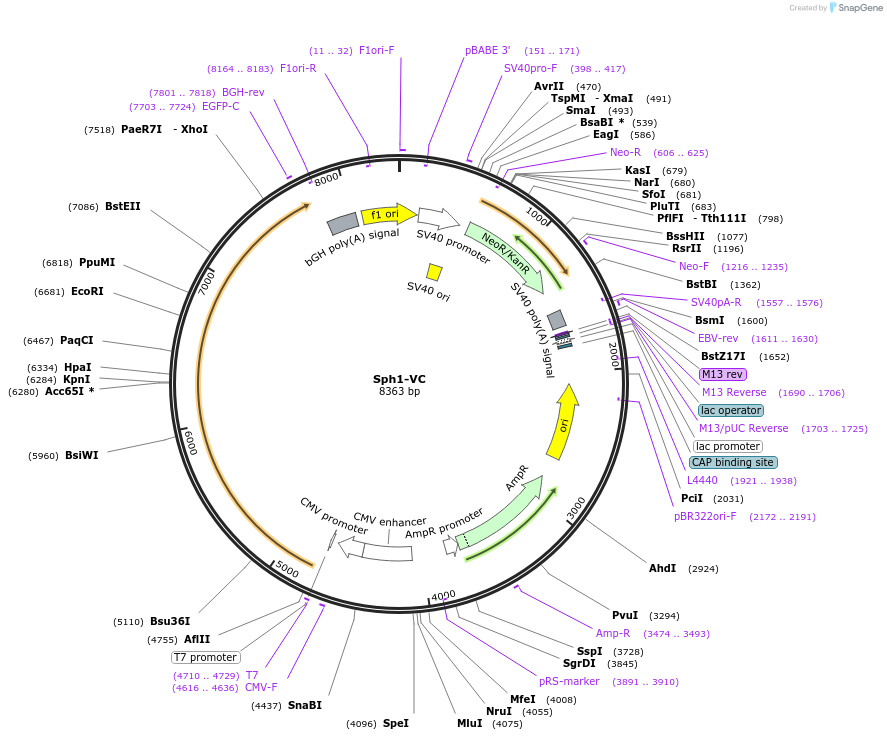Sph1-VC
(Plasmid
#89756)
-
Purposeexpresses human Synphilin fused to the C-terminal part of Venus
-
Depositing Lab
-
Publication
-
Sequence Information
Ordering
| Item | Catalog # | Description | Quantity | Price (USD) | |
|---|---|---|---|---|---|
| Plasmid | 89756 | Standard format: Plasmid sent in bacteria as agar stab | 1 | $89 | |
Backbone
-
Vector backbonepcDNA3.1
- Backbone size w/o insert (bp) 4699
- Total vector size (bp) 8444
-
Vector typeMammalian Expression
-
Selectable markersNeomycin (select with G418)
Growth in Bacteria
-
Bacterial Resistance(s)Ampicillin, 100 μg/mL
-
Growth Temperature37°C
-
Growth Strain(s)DH5alpha
-
Copy numberHigh Copy
Gene/Insert
-
Gene/Insert nameSNCAIP
-
Alt nameSYPH1, Sph1
-
SpeciesH. sapiens (human)
-
Insert Size (bp)3745
-
GenBank IDNM_005460
-
Entrez GeneSNCAIP (a.k.a. SYPH1, Sph1)
- Promoter CMV
-
Tag
/ Fusion Protein
- C-terminal part of Venus (C terminal on backbone)
Cloning Information
- Cloning method Restriction Enzyme
- 5′ cloning site AflII (not destroyed)
- 3′ cloning site XhoI (not destroyed)
- 5′ sequencing primer T7
- 3′ sequencing primer bGH
- (Common Sequencing Primers)
Resource Information
-
A portion of this plasmid was derived from a plasmid made byOriginal clone with the C-terminal part of Venus (alpha-Synuclein-VC) comes from Pamela J.McLean.
Terms and Licenses
-
Academic/Nonprofit Terms
-
Industry Terms
- Not Available to Industry
Trademarks:
- Zeocin® is an InvivoGen trademark.
Depositor Comments
Please visit https://doi.org/10.1101/2024.03.05.583522 for bioRxiv preprint.
These plasmids were created by your colleagues. Please acknowledge the Principal Investigator, cite the article in which the plasmids were described, and include Addgene in the Materials and Methods of your future publications.
-
For your Materials & Methods section:
Sph1-VC was a gift from Tiago Outeiro (Addgene plasmid # 89756 ; http://n2t.net/addgene:89756 ; RRID:Addgene_89756) -
For your References section:
Synphilin-1 as a modulator of aSyn assembly. Lázaro DF, Amen T, Gerhardt E, Santos PI, Milovanovic D, Höglinger G, Outeiro TF. bioRxiv 2024.03.05.583522 10.1101/2024.03.05.583522







